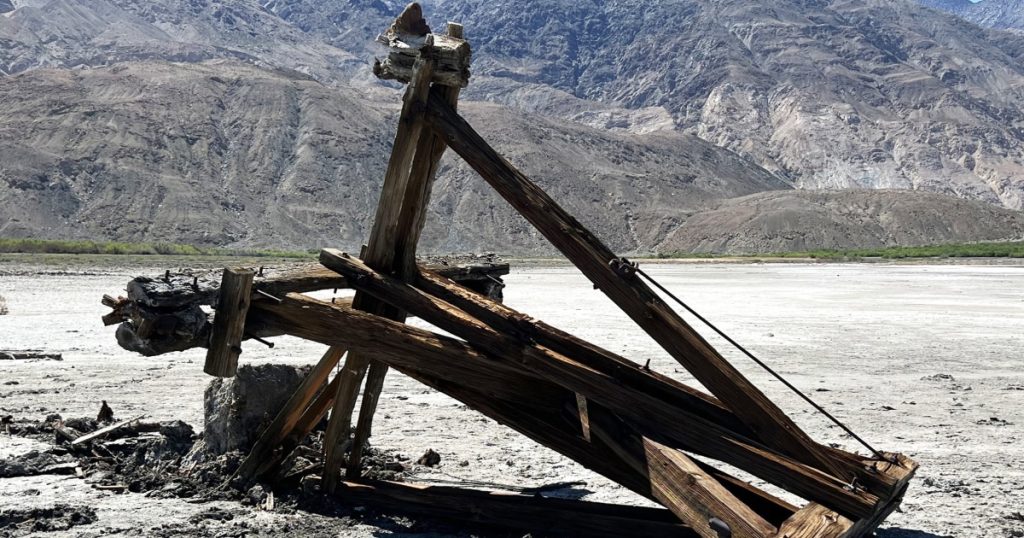A historic wooden tower in California’s Death Valley National Park was unintentionally knocked down by a traveler who used it to winch a vehicle out of mud. The traveler recently came forward but will remain anonymous, and it is unclear if any action will be taken against them. The incident occurred in Saline Valley, where the 113-year-old Saline Valley Salt Tram tower No. 1 was uprooted from its concrete footings on April 19. The traveler used the tower as an anchor to free their vehicle from mud near a marked roadway. The park service stated that the individual’s intention was not to cause harm to the historic structure.
The Saline Valley Salt Tram was built by the Saline Valley Salt Company from 1911 to 1913 and included 20 support towers spanning 13.4 miles from Saline Valley to Owens Valley. The tram ascended 7,600 feet to cross the Inyo Mountains and was a significant construction project costing about $9.5 million in today’s dollars. The cost nearly bankrupted the company, which leased the tram to another salt processor until 1930. The tram’s 1974 entry in the National Register of Historic Places described it as the steepest tramway in the United States and one of the largest of its kind still in existence.
The northernmost four towers of the tram are located within Death Valley National Park, with tower No. 1 being one of them. A 2021 structure report by the park service indicated that the concrete footings of tower No. 1 had deteriorated beyond repair and needed to be replaced. A stabilization project for the four towers was already planned before the incident, but it is uncertain if the funding allocated for it can now be used to repair tower No. 1. The park service is conducting a full assessment of the damage caused by the collapse and developing plans for the responsible restoration of the salt tram.
The park service emphasized the historical significance of the Saline Valley Salt Tram, noting its unique engineering as one of the few remaining tramways of its kind in the country. The tram transported salt from Saline Valley to Owens Valley for nearly two decades before ceasing operations in 1930. Despite facing financial challenges during construction, the tram was recognized for its scenic, historic, and well-preserved nature. Its designation on the National Register of Historic Places in 1974 highlighted its importance as a piece of American industrial history.
The incident involving the inadvertent destruction of tower No. 1 has raised concerns about the preservation of historic structures within national parks. The park service expressed its commitment to assess the damage caused by the collapse and develop a restoration plan that respects the historical integrity of the salt tram. The traveler involved in the incident has taken responsibility for their actions, and the park service is determining the appropriate course of action moving forward. As efforts are made to repair and stabilize the remaining towers of the tram, the park service remains dedicated to preserving the rich history of Death Valley National Park for future generations to appreciate and enjoy.


